Over 23,000 years ago, marriage became a necessity when hunter-gatherers turned into farmers, which facilitated gender roles taking shape. Each found their place in a household – males continued to provide food and shelter for the family while females raised the children. Marriage was instituted to ensure that their offspring stood a good chance for survival.
Certainly not as romantic as things are today, but marriage began as a way to preserve family, and that has not changed over time. Many other traditions have changed considerably over time, and we can all be grateful for that! As you’ll see, some of our most treasured wedding traditions have an ancient and even dark history. Take a look and see if you still feel the same about following some of these traditions for your wedding.
To “Tie the Knot”
This common expression is well known as meaning “to get married,” but the term is actually derived from an ancient tradition called hand-fasting. Hand-fasting has been practiced in almost every ancient civilization. During the Roman age, it was customary as part of the wedding ceremony as it symbolizes two people being committed to each other and the unbreakable bond between them.
Typically, the bride and groom’s right hands were bound together with a leather strap and undone after the marriage was complete. From ancient civilization to today, this tradition is still very much used at wedding ceremonies worldwide.
The Concealing Veil
The wedding veil is a beautiful accessory and can be worn short or long, and can be a beautiful addition to any wedding gown. The bride used to wear a veil so that the groom couldn’t see his bride’s face until the moment they were to wed. Most marriages were arranged marriages, so the thinking was, if the groom saw her and didn’t like her appearance, it would be too late for him to back out of the wedding.
The Wedding Ring

Photo by Katelyn Bradley Photography
Diamonds as a tradition in a wedding ring became popular in 1477 when Maximillian of Austria proposed to Mary of Burgundy. As the diamond is the toughest gemstone, it was considered to last forever, thereby being a symbol of love (or the arranged marriage) lasting for an eternity.
The Egyptians started putting that gold ring on the fourth finger, the digitus annularus, as there is a vein that runs from the fourth finger on the left hand straight to the heart. However, not all cultures wear the wedding ring on the left hand.
Historically, wedding rings have been known to be worn on every finger, even the thumb, but most Western societies now tend to wear their wedding rings on the fourth finger of the left hand.
The Engagement Ring
It wasn’t always customary to wear an engagement ring before marriage. Not until 1214, when Pope Innocent III introduced a period of waiting for couples wanting to marry, did the engagement ring come into play as couples wanted to display a symbol of commitment while they waited.
The Wedding Dress
In 1840, Queen Victoria married her great love, Prince Albert, and when she did, she wore all white with delicate lace and flowers.
Prior to their wedding day, brides would generally wear their best dress for their wedding, often in beautiful and bright colors. It wasn’t until this iconic marriage that women followed suit and started looking for white wedding dresses. Thus an industry was born.
The Many Bridesmaids
Though it’s hard to believe, the tradition of having bridesmaids dressed similarly to the bride began as a way to confuse the evil spirits to prevent them from finding the bride on her wedding day—the groomsmen dressed like the groom for the same reason.
This way, the couple would be free from any curses on their wedding day.
Groomsmen
The Romans were highly superstitious, so they passed a law that required ten witnesses at every wedding, all dressed like the bride and groom. That way, if the evil spirits came, they wouldn’t know who was getting married and thereby not able to ruin the wedding or curse the newlywed couple.
In later years, groomsmen were also employed to help the groom with kidnapping the bride. At that time, the groomsmen were called “Bride Knights” and they would be called upon to kidnap the bride and then stand watch during the ceremony so that the bride’s angry family couldn’t thwart the ceremony.
The bride would stand on the left of her groom so that he could have his sword-wielding hand free to fight off any potential suitors. The groomsman who proved most successful in kidnapping was referred to as the “Best Man.”
Kidnapping the Bride
In the mid to late 8th century, Romulus threw a huge party, and invited the people of Sabine to join him. While they were having a grand time, he kidnapped all their women.
It sounds a bit barbaric, but up until 1753, English brides would be kidnapped for their grooms. Luckily the English passed a Marriage Act, and in the 1880’s, several more women’s property acts were instituted, making it a thing of the past. After this point, the father of the bride would walk the bride up the aisle.
The Flower Girl
The tradition of the flower girl at a wedding comes from the Ancient Romans. Young virgins carried sheaths of wheat up the aisle as they believed it would bring good fortune and well-being to the couple as they started their lives together.
Since then, wheat has been replaced by rose petals scattered down the path that leads to the altar.
The Ring Bearer
In Victorian times, pageboys were the ones that would carry a bride’s train down the aisle, and they would also carry a prayer book. As a show of wealth, during the same period, Victorians started placing the wedding rings on a small pillow as pillows were very expensive in those days and were considered luxury items that few could afford.
Subsequently, it became the pageboy’s duty to carry the pillow down the aisle, which has now turned into the ring bearer’s role.
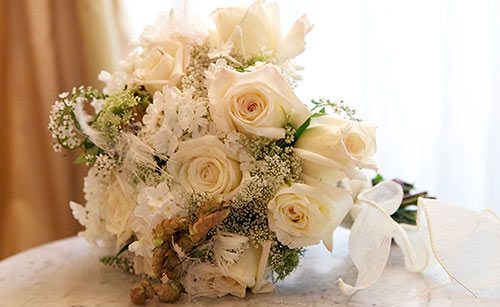
The Bridal Bouquet
Brides in Ancient Rome carried flowers as a representation of fidelity, new beginnings, and hope of fertility. In the Middle Ages, the bridal bouquet was made of herbs, specifically garlic, rosemary, and grains, as it was believed that these particular herbs would drive away the evil spirits.
It was in Victorian times that this was changed to putting flowers in the bride’s bouquet. Another tradition that you can thank Queen Victoria for–she was the first to hold a small round clutch of flowers in a filigree holder that included moss and orange blossom.
Flowers have different meanings, and during the Victorian age, lovers would send various flowers to each other that held specific meanings to express their love. The flowers that were chosen by the bride would be considered “her flowers” for the rest of her life.
The Tossing of the Bridal Bouquet and Garter
In 14th century England and France, the bride was fraught with anxiety as two traditions made for a stressful day for her. It was thought that obtaining a piece of the bride’s dress would garner good luck, so many anxious guests would do what they could to tear a piece of the bride’s clothing to take home. This would often leave the bride wishing she had more clothing on at the end of the night!
Another unfortunate tradition was that the bride would toss her garter into the crowd of men. However, the groom would often have to save the bride from the groping group, and then he would throw the garter into the crowd as a distraction so that he and his bride could slip away from the reception.
The “Something Blue”
Dating back to early Christianity, the color blue was a symbol of purity and fidelity. The Virgin Mary is often rendered in a blue robe.
Brides now wear something blue to symbolize the purity of their love for their spouse and their promise to be true.
The Wedding Cake
Ancient Romans believed that the cake, usually made of wheat cakes, represented fertility. They would break it over the head of the bride to ensure her fertility.
Then, the ritual changed into a kissing game. They would place the wheat cakes on top of each other, and the groom and the bride were challenged to kiss each other over the top, as layer after layer of cake were added, being careful not to knock over the tower. It was thought that if the couple were successful, they would enjoy a life of good fortune together.
The Tossing of Rice
Rice, wheat, and other grains were long thought to be signs of prosperity and fertility. So, showering the newlyweds with grains after the wedding were symbolic of showering the bride and groom with good fortune.
Tying Cans to the Bumper of the Car
People went to great lengths to ward off evil spirits, and this tradition is no exception. In France, it was called throwing a “charivari” for the couple, and it usually involved the whole village. Friends, family, and neighbors walked down the streets, banging pots and pans to make all the noise they could throughout the village to scare away those pesky evil spirits.
As the cans make a similar loud noise, the tradition was adapted to tying them to the back of the couple’s car.
Carrying the Bride over the Threshold
From kidnappings to having her dress being torn by guests, being mobbed by the men for the garter, and having the cake broken over her head, it’s amazing that women got married at all! The saving grace is, at the end of a very long day of crazy rituals, the Roman groom would do one last thing to protect his wife from (you guessed it!) the demons in the floor, and that was to carry his new wife over the threshold.
The Honeymoon
Why is it called a honeymoon? This tradition dates back to the time when months were referred to as “moons,” and Norse newly-married couples would go into hiding after the nuptials.
Every day for 30 days, a member of one of their families would bring them a cup of mead (honey wine) during the first moon of their marriage.
Mardie has been a successful businesswoman since 1981. The Rough & Ready Vineyards was created out of Mardie’s desire to contribute to the community. Mardie's vision to serve the community is rooted in her love of Nevada County, and it provided her with the opportunity to revitalize an old Ranch property into a breathtaking wedding venue.
Her innovative mind and commitment to environmental accountability contribute in a positive way to our community and the surrounding area. With the Rough & Ready Vineyards, Mardie seeks to create the best wedding experience for our clients and their guests, creating memories that will last for generations.

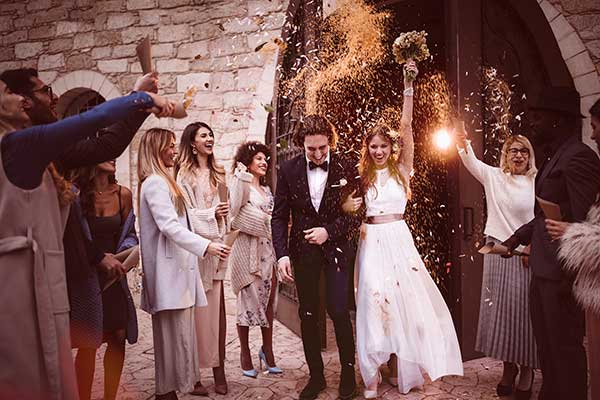
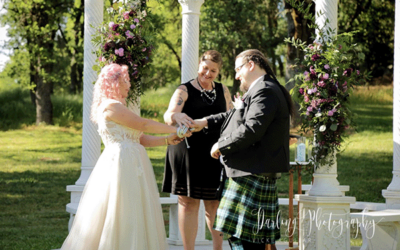
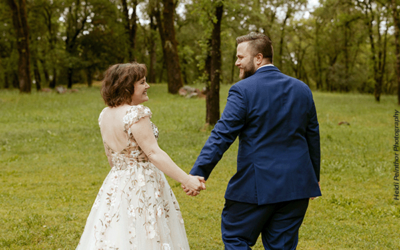
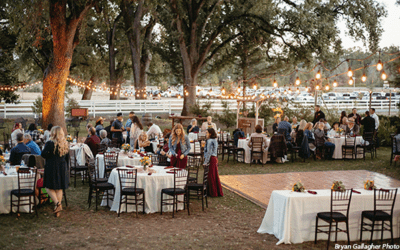
0 Comments